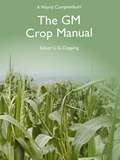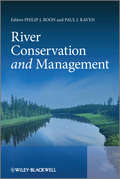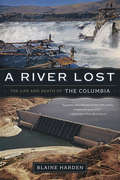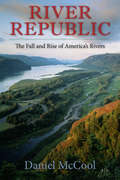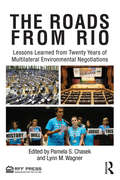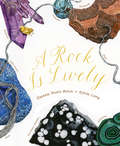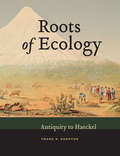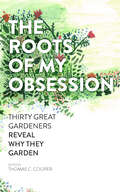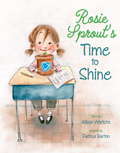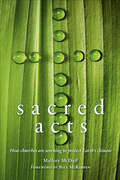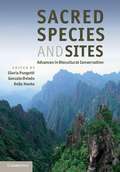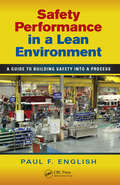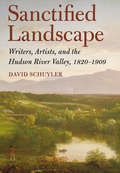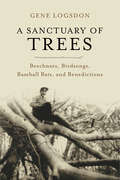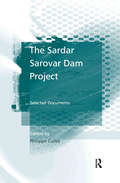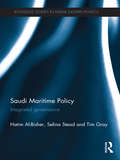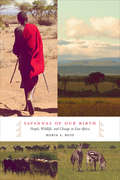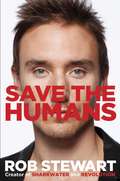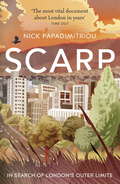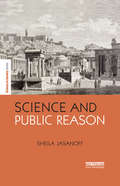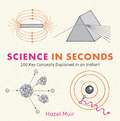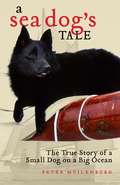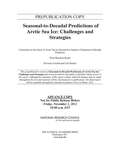- Table View
- List View
Rethinking Park Protection
by Will LapageIn today's society, hidden beliefs can subtly guide the management of parks, such as treating them as natural resources rather than national assets. Resulting management practices often lead to deferred maintenance on park infrastructure, causing inadequate protection from vandalism, poaching, and theft of artefacts. A sad demise, often due to an out-dated belief that parks are non-essential leisure services rather than necessities for a vibrant modern life. This book challenges the reader to examine the core beliefs that created our public parklands, comparing them with the beliefs that guide contemporary park stewardship in an effort to improve the management of parks and reassess their purpose in modern life.
River Conservation and Management
by Paul Raven Philip BoonThis book is intended for those with an academic, scientific and practical interest in river conservation and management. It provides an overview of how changes in legislation, policies, institutional responsibilities, science, technology, practical techniques and public perception have influenced how rivers have been managed over the past 20 years and the challenges that lie ahead during the next 20 years.The book is based on the international conference River Conservation and Management:20 Years On held at York. Thirty-one chapters, with contributions from North and South America, Europe, Asia and Australasia provide a wide-ranging perspective on this complex but profoundly important subject. Following an introduction that chronicles the most important contextual changes, the book is organized into four broad topics:Catchment management, ecosystem integrity and the threats to river ecosystems - this covers progress on understanding and addressing the pressures affecting rivers, many of which will be amplified by climate change and increasing human demands for water; Methods and approaches - illustrating some recent techniques that have been developed to assess condition and conservation status across different types of river; Recovery and rehabilitation - providing an insight into the principles, practice, public involvement and institutional networks that support and make improvements to modified river reaches; Integrating nature conservation into wider river management -demonstrating the importance of integrated planning, involvement of local communities and the use of adaptive management in achieving multiple environmental and economic benefits along rivers used for different purposes. The final chapter discusses the challenges faced in dealing with an uncertain future.More than 1200 different references and numerous web-site citations provide the reader with an invaluable source of knowledge on the subject area.
A River Lost: The Life and Death of the Columbia (Revised and Updated)
by Blaine Harden"Superbly reported and written with clarity, insight, and great skill." --Washington Post Book World After two decades, Washington Post journalist Blaine Harden returned to his small-town birthplace in the Pacific Northwest to follow the rise and fall of the West's most thoroughly conquered river. To explore the Columbia River and befriend those who collaborated in its destruction, he traveled on a monstrous freight barge sailing west from Idaho to the Grand Coulee Dam, the site of the river's harnessing for the sake of jobs, electricity, and irrigation. A River Lost is a searing personal narrative of rediscovery joined with a narrative of exploitation: of Native Americans, of endangered salmon, of nuclear waste, and of a once-wild river. Updated throughout, this edition features a new foreword and afterword.
River Republic: The Fall and Rise of America's Rivers
by Daniel McCoolDaniel McCool not only chronicles the history of water development agencies in America and the way in which special interests have abused rather than preserved the country's rivers, he also narrates the second, brighter act in this ongoing story: the surging, grassroots movement to bring these rivers back to life and ensure they remain pristine for future generations. The culmination of ten years of research and observation, McCool's book confirms the surprising news that America's rivers are indeed returning to a healthier, free-flowing condition. The politics of river restoration demonstrates how strong grassroots movements can challenge entrenched powers and win. Through passion and dedication, ordinary people are reclaiming the American landscape, forming a "river republic" of concerned citizens from all backgrounds and sectors of society. As McCool shows, the history, culture, and fate of America is tied to its rivers, and their restoration is a microcosm mirroring American beliefs, livelihoods, and an increasing awareness of what two hundred years of environmental degradation can do. McCool profiles the individuals he calls "instigators," who initiated the fight for these waterways and, despite enormous odds, have succeeded in the near-impossible task of challenging and changing the status quo. Part I of the volume recounts the history of America's relationship to its rivers; part II describes how and why Americans "parted" them out, destroying their essence and diminishing their value; and part III shows how society can live in harmony with its waterways while restoring their well-being—and, by extension, the well-being of those who depend on them.
The Roads from Rio: Lessons Learned from Twenty Years of Multilateral Environmental Negotiations
by Pamela S. Chasek Lynn M. WagnerAt the 1992 United Nations Conference on Environment and Development, popularly known as the Rio Earth Summit, the world’s leaders constructed a new "sustainable development" paradigm that promised to enhance environmentally sound economic and social development. Twenty years later, the proliferation of multilateral environmental agreements points to an unprecedented achievement, but is worth examining for its accomplishments and shortcomings. This book provides a review of twenty years of multilateral environmental negotiations (1992-2012). The authors have participated in most of these negotiating processes and use their first-hand knowledge as writers for the International Institute for Sustainable Development’s Earth Negotiations Bulletin as they illustrate the changes that have taken place over the past twenty years. The chapters examine the proliferation of meetings, the changes in the actors and their roles (governments, nongovernmental organizations, secretariats), the interlinkages of issues, the impact of scientific advice, and the challenges of implementation across negotiating processes, including the Framework Convention on Climate Change, the Convention to Combat Desertification, the Convention on Biological Diversity, the Commission on Sustainable Development, the UN Forum on Forests, the chemicals conventions (Stockholm, Basel and Rotterdam), the Montreal Protocol on Substances that Deplete the Ozone Layer, the Convention on International Trade in Endangered Species, the Convention on Migratory Species and the International Treaty on Plant Genetic Resources for Food and Agriculture.
A Rock Is Lively
by Dianna Hutts Aston Sylvia Long<p>From the award-winning creators of An Egg Is Quiet, A Seed Is Sleepy, and A Butterfly Is Patient comes a gorgeous and informative introduction to the fascinating world of rocks. From dazzling blue lapis lazuli to volcanic snowflake obsidian, an incredible variety of rocks are showcased in all their splendor. Poetic in voice and elegant in design, this book introduces an array of facts, making it equally perfect for classroom sharing and family reading. <p>This is a fixed-format ebook, which preserves the design and layout of the original print book.</p>
Roots of Ecology
by Frank N. EgertonEcology is the centerpiece of many of the most important decisions that face humanity. Roots of Ecology documents the deep ancestry of this now enormously important science from the early ideas of Herodotos, Plato, and Pliny, up through those of Linnaeus and Darwin, to those that inspired Ernst Haeckel's mid-nineteenth-century neologism ecology. Based on a long-running series of regularly published columns, this important work gathers a vast literature illustrating the development of ecological and environmental concepts, ideas, and creative thought that has led to our modern view of ecology. Roots of Ecology should be on every ecologist's shelf.
The Roots of My Obsession: Thirty Great Gardeners Reveal Why They Garden
by Thomas C. CooperWhy do you garden? For fun? Work? Food? The reasons to garden are as unique as the gardener.The Roots of My Obsession features thirty essays from the most vital voices in gardening, exploring the myriad motives and impulses that cause a person to become a gardener. For some, it’s the quest to achieve a personal vision of ultimate beauty; for others, it’s a mission to heal the earth, or to grow a perfect peach. The essays are as distinct as their authors, and yet each one is direct, engaging, and from the heart. For Doug Tallamy, a love of plants is rooted first in a love of animals: “animals with two legs (birds), four legs (box turtles, salamanders, and foxes), six legs (butterflies and beetles), eight legs (spiders), dozens of legs (centipedes), hundreds of legs (millipedes), and even animals with no legs (snakes and pollywogs).” For Rosalind Creasy, it’s “not the plant itself; it’s how you use it in the garden.” And for Sydney Eddison, the reason has changed throughout the years. Now, she “gardens for the moment.” As you read, you may find yourself nodding your head in agreement, or gasping in disbelief. What you’re sure to encounter is some of the best writing about the gardener’s soul ever to appear. For anyone who cherishes the miracle of bringing forth life from the soil, The Roots of My Obsession is essential inspiration.
Rosie Sprout's Time to Shine
by Patrice Barton Allison WortcheViolet runs the fastest, sings the highest, looks the fanciest, and talks the loudest. Everyone agrees that she's the best.Except Rosie. Rosie isn't fast, or loud, or fancy, but she's tired of hearing that Violet is the best. When their class grows pea plants, Rosie's and Violet's are the first to sprout! But Violet's is a little taller. So Rosie pushes some soil over Violet's sprout to slow it down. And for a moment, Rosie's plant is the best--but she feels terrible. And she feels even worse when she learns that Violet has the chicken pox.So for the next two weeks, Rosie waters her plant--and Violet's too. She turns them in the sun, and sings them quiet growing songs. And her teacher says that Rosie is the best gardener she's ever had. Definitely the best.This empathetic story captures every child's desire to be noticed and praised, and the subtle competitions that go on in a classroom. It's a book to swell every shy child's heart.From the Hardcover edition.
Rural Wit and Wisdom
by Steve Apps Jerry AppsIn an updated and expanded edition of a timeless classic, best-selling author Jerry Apps has written and collected oft-spoken phrases, observations, comments, and conundrums celebrating country life and rural living. Black-and-white photographs by Steve Apps, an award-winning photojournalist, complement the text, which offers humorous, touching, and unique glimpses into the lighter side of life in the Midwest.Jerry Apps writes novels and nonfiction about the outdoors, country life, and rural living. He received the 2008 First Place Nature Writing Award from the Midwest Independent Publishers Association and the 2007 Major Achievement Award from the Council for Wisconsin Writers. He and his wife live in Madison, Wisconsin.Steve Apps is an award-winning photojournalist with twenty-five years in the newspaper industry. As a Wisconsin State Journal staff photographer, he has covered a wide range of assignments, including the Green Bay Packers and the University of Wisconsin-Madison sports.
Sacred Acts: How Churches Are Working to Protect Earth's Climate
by Mallory Mcduff Bill MckibbenFrom evangelicals to Episcopalians, people of faith are mobilizing to confront climate change. This unique anthology brings together stories from all over North America of contemporary church leaders, parishioners, and religious activists who are working to define a new environmental movement, where honoring the Creator means protecting the planet.Sacred Acts documents the diverse actions taken by churches to address climate change through stewardship, advocacy, spirituality, and justice. Contributions from leading Christian voices such as Norman Wirzba and the Reverend Canon Sally Bingham detail the work of faith communities:*Englewood Christian Church in Indianapolis, Indiana, where parishioners have enhanced food security by sharing canning and food preservation skills in the church kitchen*Georgia's Interfaith Power & Light, which has used federal stimulus funds help congregations, reduce utility bills, and cut carbon emissions*Earth Ministry, where people of faith spearheaded the movement to pass state legislation to make Washington State coal-freeSacred Acts shows that churches can play a critical role in confronting climate change-perhaps the greatest moral imperative of our time. This timely collection will inspire individuals and congregations to act in good faith to help protect Earth's climate.Mallory McDuff teaches environmental education at Warren Wilson College, a unique liberal arts school that combines academics with work and service. A lifelong Episcopalian, she was raised in a family that integrated faith and environmental stewardship. She is the author of Natural Saints.
Sacred Species and Sites
by Della Hooke Gonzalo Oviedo Gloria PungettiIt is being increasingly recognised that cultural and biological diversity are deeply linked and that conservation programmes should take into account the ethical, cultural and spiritual values of nature. With contributions from a range of scholars, practitioners and spiritual leaders from around the world, this book provides new insights into biocultural diversity conservation. It explores sacred landscapes, sites, plants and animals from around the world to demonstrate the links between nature conservation and spiritual beliefs and traditions. Key conceptual topics are connected to case studies, as well as modern and ancient spiritual insights, guiding the reader through the various issues from fundamental theory and beliefs to practical applications. It looks forward to the biocultural agenda, providing guidelines for future research and practice and offering suggestions for improved integration of these values into policy, planning and management.
Safety Performance in a Lean Environment: A Guide to Building Safety into a Process (Occupational Safety & Health Guide Series)
by Paul F. EnglishAs changing customer demands and shifting world markets continue to put a strain on businesses in all sectors, your business needs every advantage to stay competitive. Many people may think of Lean processes as suitable only for the manufacturing floor, but that couldn't be further from the truth. Safety Performance in a Lean Environment: A Guide t
Sanctified Landscape: Writers, Artists, and the Hudson River Valley, 1820–1909
by David SchuylerThe Hudson River Valley was the first iconic American landscape. Beginning as early as the 1820s, artists and writers found new ways of thinking about the human relationship with the natural world along the Hudson. Here, amid the most dramatic river and mountain scenery in the eastern United States, Washington Irving and James Fenimore Cooper created a distinctly American literature, grounded in folklore and history, that contributed to the emergence of a sense of place in the valley. Painters, led by Thomas Cole, founded the Hudson River School, widely recognized as the first truly national style of art. As the century advanced and as landscape and history became increasingly intertwined in the national consciousness, an aesthetic identity took shape in the region through literature, art, memory, and folklore-even gardens and domestic architecture. In Sanctified Landscape, David Schuyler recounts this story of America's idealization of the Hudson Valley during the nineteenth and early twentieth centuries. Schuyler's story unfolds during a time of great change in American history. At the very moment when artists and writers were exploring the aesthetic potential of the Hudson Valley, the transportation revolution and the rise of industrial capitalism were transforming the region. The first generation of American tourists traveled from New York City to Cozzens Hotel and the Catskill Mountain House in search of the picturesque. Those who could afford to live some distance from jobs in the city built suburban homes or country estates. Given these momentous changes, it is not surprising that historic preservation emerged in the Hudson Valley-the first building in the United States preserved for its historic significance is Washington's Headquarters in Newburgh. Schuyler also finds the seeds of the modern environmental movement in the transformation of the Hudson Valley landscape. Richly illustrated and compellingly written, Sanctified Landscape makes for rewarding reading. Schuyler expertly ties local history to national developments, revealing the Hudson River Valley was so important to nineteenth-century Americans-and why it is still beloved today.
A Sanctuary of Trees: Beechnuts, Birdsongs, Baseball Bats, and Benedictions
by Gene Logsdon"As author Gene Logsdon puts it, 'We are all tree huggers. ' But not just for sentimental or even environmental reasons. Humans have always depended on trees for our food, shelter, livelihood, and safety. In many ways, despite the Grimm's fairy-tale version of the dark, menacing forest, most people still hold a deep cultural love of woodland settings, and feel right at home in the woods. In this latest book, A Sanctuary of Trees, Logsdon offers a loving tribute to the woods, tracing the roots of his own home groves in Ohio back to the Native Americans and revealing his own history and experiences living in many locations, each of which was different, yet inextricably linked with trees and the natural world. Whether as an adolescent studying at a seminary or as a journalist living just outside Philadelphia's city limits, Gene has always lived and worked close to the woods, and his curiosity and keen sense of observation have taught him valuable lessons about a wide variety of trees: their distinct characteristics and the multiple benefits and uses they have. In addition to imparting many fascinating practical details of woods wisdom, A Sanctuary of Trees is infused with a philosophy and descriptive lyricism that is born from the author's passionate and lifelong relationship with nature:There is a point at which the tree shudders before it begins its descent. Then slowly it tips, picks up speed, often with a kind of wailing death cry from rending wood fibers, and hits the ground with a whump that literally shakes the earth underfoot. The air, in the aftermath, seems to shimmy and shiver, as if saturated with static electricity. Then follows an eerie silence, the absolute end to a very long life. Fitting squarely into the long and proud tradition of American nature writing, A Sanctuary of Trees also reflects Gene Logsdon's unique personality and perspective, which have marked him over the course of his two dozen previous books as the authentic voice of rural life and traditions" --
The Sardar Sarovar Dam Project: Selected Documents
by Philippe CulletThe Sardar Sarovar Project has been one of the most debated development projects of the past several decades at both an international level and within India itself. Cullet's volume brings together all the key documents relating to the project: including those pertaining to World Bank loans, the judicial pronouncements of the Supreme Court and documents relating to specific local level issues - in particular environment and rehabilitation. The work includes an introductory section focusing on the history of the project, the involvement of the different actors, the impacts on the local population, and a general analysis of the controversy surrounding it. In providing an easily accessible source for all the main documents relating to this landmark project, this compilation will be a valuable resource for researchers and policy-makers working in the areas of International Environmental Law and International Development Law.
Saudi Maritime Policy: Integrated Governance (Routledge Studies in Middle Eastern Politics)
by Tim Gray Hatim Al-Bisher Selina SteadBecause marine governance in most countries is sectoral, maritime policies are frequently fragmented, reactive, and even contradictory, meaning that marine resources are underutilized and poorly protected. To avoid these problems, the concept of integrated national maritime policy (INMP) has been developed. This book examines this concept, analysing its current application in four countries – Australia, Canada, UK and USA – whilst discussing at length how it might be applied to Saudi Arabia. Based on extensive fieldwork carried out in Saudi Arabia – including interviews with officials in government departments with maritime responsibilities, and a survey administered to 230 stakeholders – the book offers a unique insight into INMP in the Kingdom. The book provides a practical template for developing the political will and civil constituency in Saudi Arabia necessary for the introduction of INMP. In setting out in detail its benefits, this book could help build the momentum in Saudi Arabia required to implement the concept as well as attract other countries to do the same. A significant contribution to the growing literature on ocean governance, this book will be of great importance to policy makers and scholars of Middle Eastern studies, marine governance and comparative politics.
Savage Tsunamis
by Michael PortmanIntroduces tsunamis, describing how they are formed, the damages that result from them, and the devices that are being developed to predict them.
Savannas of Our Birth
by Robin S. ReidThis book tells the sweeping story of the role that East African savannas played in human evolution, how people, livestock, and wildlife interact in the region today, and how these relationships might shift as the climate warms, the world globalizes, and human populations grow. Our ancient human ancestors were nurtured by African savannas, which today support pastoral peoples and the last remnants of great Pleistocene herds of large mammals. Why has this wildlife thrived best where they live side-by-side with humans? Ecologist Robin S. Reid delves into the evidence to find that herding is often compatible with wildlife, and that pastoral land use sometimes enriches savanna landscapes and encourages biodiversity. Her balanced, scientific, and accessible examination of the current state of the relationships among the region's wildlife and people holds critical lessons for the future of conservation around the world.
Save the Humans
by Rob StewartIn Save the Humans, award-winning documentary filmmaker Rob Stewart tells his captivating life-story-so-far--from self-professed "animal nerd" to one of the world's leading environmental activists, from a person whose sole focus was saving his beloved sharks to a mission to save us all. Rob Stewart has always been in love with creatures, the odder or more misunderstood the better. His passion for all living things, including Satan, his 7-foot-long, 80-pound pet water monitor, has led him around the world, as a university student studying zoology in Kenya, as a wildlife photographer in Madagascar and Southeast Asia, and ultimately as a documentary filmmaker in the Pacific shooting his innovative and award-winning documentary Sharkwater. Risking arrest and mafia reprisal in Costa Rica, nearly losing a leg to flesh-eating disease in Panama and getting lost at sea in the remote Galapagos Islands, Stewart is living proof that the best way to create change in the world is to dive in over your head. His documentary sparked shark fin bans around the world, but his story doesn't end with saving sharks. Stewart has set his sights on a slightly bigger goal--saving the human species. He has criss-crossed the globe to meet with the visionaries, entrepreneurs, scientists and children working to solve our environmental crises, and his message is clear: the revolution to save humanity has started and the only thing missing is you!
Scarp
by Nick PapadimitriouNick Papadimitriou has spent a lifetime living on the margins, walking and documenting the landscapes surrounding his home in Child's Hill, North London, in a study he calls Deep Topography. Part meditation on nature and walking, part memoir and part social history, his arresting debut is first and foremost a personal inquiry into the spirit of a place: a 14-mile broken ridge of land on the fringes of Northern London known as Scarp. Conspicuous but largely forgotten, a vast yet largely invisible presence hovering just beyond the metropolis, Scarp is a vast storehouse of regional memory. We join the author as he explores and reimagines this brooding, pregnant landscape, meticulously observing his surroundings, finding surprising connections and revealing lost slices of the past. SCARP captures the satisfying experience of a long, reflective walk. Whether talking about the beauty of a bird or a telegraph pole, deaths at a roundabout or his own troubled past, Papadimitriou celebrates the poetry in the everyday. His captivating prose reveals that the world around us is alive and intrinsically valuable in ways that the trappings of day-to-day life lead us to forget, and allows us to re-connect with something more authentic, more immediate, more profound.
Science and Public Reason (The Earthscan Science in Society Series)
by Sheila JasanoffThis collection of essays by Sheila Jasanoff explores how democratic governments construct public reason, that is, the forms of evidence and argument used in making state decisions accountable to citizens. The term public reason as used here is not simply a matter of deploying principled arguments that respect the norms of democratic deliberation. Jasanoff investigates what states do in practice when they claim to be reasoning in the public interest. Reason, from this perspective, comprises the institutional practices, discourses, techniques and instruments through which governments claim legitimacy in an era of potentially unbounded risks—physical, political, and moral. Those legitimating efforts, in turn, depend on citizens’ acceptance of the forms of reasoning that governments offer. Included here therefore is an inquiry into the conditions that lead citizens of democratic societies to accept policy justification as being reasonable. These modes of public knowing, or “civic epistemologies,” are integral to the constitution of contemporary political cultures. Methodologically, the book is grounded in the field of Science and Technology Studies (STS). It uses in-depth qualitative studies of legal and political practices to shed light on divergent cross-cultural constructions of public reason and the reasoning political subject. The collection as a whole contributes to democratic theory, legal studies, comparative politics, geography, and ethnographies of modernity, as well as STS.
Science in Seconds
by Hazel MuirSimple and accessible, Science in Seconds is a visually led introduction to 200 key scientific ideas. Each concept is readily absorbed through an easy-to-understand picture and a concise explanation.Concepts span all of the most fundamental scientific disciplines including Physics, Chemistry, Biology, Ecology, Biotechnology, Anatomy and Physiology, Medicine, Earth Science, Energy Generation, Astronomy, Spaceflight and Information Technology.From the Trade Paperback edition.
A Sea Dog's Tale: The True Story of a Small Dog on a Big Ocean
by Peter MuilenburgA family with wanderlust, a sailboat to carry them across oceans, and an 11-pound dog to watch over them... These are the elements of this delightful memoir of adventurous living. Young newlyweds Peter and Dorothy Muilenburg found their way from New Hampshire to the Virgin Islands. He had been a civil rights Freedom Fighter, jailed in Mississippi while protesting racial injustice. In St. John, she founded the Pine Peace School. They both taught. On an East End beach, he built a sailboat strong enough to take them anywhere, and they put to sea with their two young sons. But their crew was not yet complete. Santos, a schipperke, came to them as a tiny puppy and sailed with them all his life--75,000 deep-sea miles--four times across the Atlantic, crisscrossing the Caribbean, coasting the U.S. eastern seaboard, exploring the Med, ranging up African rivers. A lightning rod for trouble, he survived a kidnapping, hurricanes, raging surf, being lost overboard at sea, and was twice given up for dead. And he watched over his family with fierce and abiding devotion. If you want to see the world--really see it--go by sailboat. And if you want to absorb the world through every pore, take a venturesome dog as your guide. The bright spirit named Santos became a legend to millions of readers through the pages of SAIL and Reader's Digest magazines. Now Peter Muilenburg--a wise and observant chronicler with a true wanderer's desire to engage the world on authentic terms--has written this captivating story of familial love and adventure, unforgettable people and places, and an amazing schipperke who has sailed right into the sea dog hall of fame.
Seasonal-to-Decadal Predictions of Arctic Sea Ice: Challenges and Strategies
by Committee on the Future of Arctic Sea Ice Research in Support of Seasonal-to-Decadal PredictionsRecent well documented reductions in the thickness and extent of Arctic sea ice cover, which can be linked to the warming climate, are affecting the global climate system and are also affecting the global economic system as marine access to the Arctic region and natural resource development increase. Satellite data show that during each of the past six summers, sea ice cover has shrunk to its smallest in three decades. The composition of the ice is also changing, now containing a higher fraction of thin first-year ice instead of thicker multi-year ice. Understanding and projecting future sea ice conditions is important to a growing number of stakeholders, including local populations, natural resource industries, fishing communities, commercial shippers, marine tourism operators, national security organizations, regulatory agencies, and the scientific research community. However, gaps in understanding the interactions between Arctic sea ice, oceans, and the atmosphere, along with an increasing rate of change in the nature and quantity of sea ice, is hampering accurate predictions. Although modeling has steadily improved, projections by every major modeling group failed to predict the record breaking drop in summer sea ice extent in September 2012. Establishing sustained communication between the user, modeling, and observation communities could help reveal gaps in understanding, help balance the needs and expectations of different stakeholders, and ensure that resources are allocated to address the most pressing sea ice data needs. Seasonal-to-Decadal Predictions of Arctic Sea Ice: Challenges and Strategies explores these topics.
